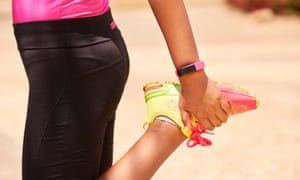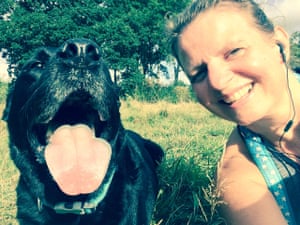One in four adults in England get less than 30 minutes of exercise a week, with women more likely to be inactive, a report shows.
NHS Digital’s annual review of obesity in England also found high levels of obesity among adults and children, with only around a quarter of adults eating the recommended five portions of fruit and vegetables a day.
Twenty six per cent of all adults were classified as inactive (undertaking fewer than 30 minutes of physical activity a week), with women more likely to be inactive (27%) than men (24%).
People who are long-term unemployed or who have never worked are most likely not to take exercise (37%), compared with 17% of those in professional and managerial jobs.
Almost a third of people in South Tyneside, Leicester, Barking and Dagenham and Rochdale are deemed to be inactive, while the lowest rates of inactivity were found in Wokingham (13%) and Brighton and Hove (14%), the report said.
In 2015, 58% of women and 68% of men in England were overweight or obese. Obesity has risen from 15% of adults in 1993 to 27% in 2015.
The prevalence of morbid obesity has more than tripled since 1993, affecting 2% of men and 4% of women in 2015.
The report also revealed high numbers of overweight children, with more than one in five in reception class (aged four to five) being overweight or obese in 2015-16, rising to more than one in three for children in year 6.
On Thursday, Public Health England (PHE) published new voluntary targets for the food industry to reduce sugar levels by 20% by 2020 in nine categories of food popular with children.
The NHS Digital report found that only 26% of adults ate the recommended five portions of fruit or vegetables a day in 2015: 47% of men and 42% of women ate fewer than three portions a day. But 52% of 15-year-olds said they hit the recommended five a day.
The data also showed there were 525,000 hospital admissions in England in 2015-16 where obesity was recorded as a factor. Two in three patients, or 67%, were female.
The data revealed, too, that 6,438 weight-loss surgical procedures were carried out.
A spokesman for the Obesity Health Alliance, a coalition of more than 40 health charities, campaign groups and medical colleges, said: “As waistlines increase, so do the chances of developing life-threatening conditions like Type 2 diabetes, heart disease and cancer, putting further strain on our already overstretched health service.
“This data is a stark reminder of exactly why we need measures like the sugar reduction programme and the soft drinks industry levy to help create a healthier environment for all.”
Dr Justin Varney, Public Health England’s national lead for adult health and wellbeing, said: “We need many more adults and children to be more physically active. Little and often makes a big difference – just 10 minutes extra walking each day can improve a person’s health and their overall quality of life.”
Chris Allen, senior cardiac nurse at the British Heart Foundation, said: “Being inactive can dramatically increase your risk of having a deadly heart attack or stroke.
“But the good news is that it’s never too late to start being more active, which can help you control your weight, reduce blood pressure and cholesterol and improve your mental health.
“The recommended 150 minutes of physical activity a week may seem like a lot, but you can break it down into 10-minute sessions and gradually build up.”
Quarter of adults in England "get less than half hour of exercise a week"










